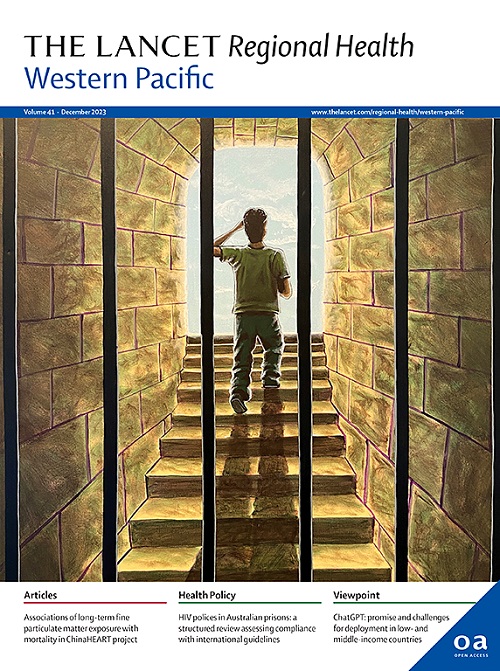Trends in smoking prevalence among 14–15-year-old adolescents before and after the emergence of vaping in New Zealand; an interrupted time series analysis of repeated cross-sectional data, 1999–2023
IF 7.6
1区 医学
Q1 HEALTH CARE SCIENCES & SERVICES
引用次数: 0
Abstract
Background
New Zealand experienced a prolonged period of minimal regulation on e-cigarettes until the passing of the 2020 Smokefree Environments and Regulated Products (Vaping) Amendment Act.
Methods
Interrupted time series analyses of the Action for Smokefree 2025 (ASH) Year 10 Snapshot Survey data from 1999 to 2023 to compare changes in smoking trends among 14–15-year-old students (n = 690,470) before and after the advent of vaping in New Zealand (around 2010).
Findings
The prevalence of daily-vaping increased from 1.1% in 2015 (the first year the question was asked) to 1.8% in 2018 before rising to 10.0% in 2023, a nine-fold increase over eight years. From 1999 to 2023, considerable declines in ever-, regular-, and daily-smoking prevalence were observed. However, the rates of decline in ever- and regular-smoking slowed significantly from 2010 onwards (p < 0.001 for both), coinciding with the advent and rapid growth of vaping among New Zealand adolescents. In contrast, the rate of decline in daily-smoking did not significantly change from 2010 onwards (p = 0.066). These findings were robust to sensitivity analyses, including the use of different time series interruption points (change-years) and controlling for inflation-adjusted cigarette prices.
Interpretation
Our findings starkly contrast with those from a previous analysis of ASH data, which suggested that e-cigarettes appear to be displacing smoking among New Zealand youth. Instead, our findings suggest that among 14–15-year-olds, the rapid rise of vaping may have slowed the rates of decline in ever- and regular-smoking, while having little or no impact on the rate of decline in daily smoking. Our findings underscore the importance of effective policy approaches to curb both adolescent vaping and smoking.
Funding
None.
新西兰电子烟出现前后14 - 15岁青少年吸烟率的趋势;1999-2023年重复横截面数据的中断时间序列分析
在通过2020年无烟环境和受监管产品(电子烟)修正案之前,新西兰经历了一段很长时间对电子烟的最低监管。方法对《2025年无烟行动》(ASH) 10年级快照调查1999年至2023年的数据进行中断时间序列分析,比较新西兰电子烟出现前后(2010年左右)14 - 15岁学生(n = 690,470)吸烟趋势的变化。每日吸电子烟的比例从2015年(提出这个问题的第一年)的1.1%上升到2018年的1.8%,然后在2023年上升到10.0%,在8年里增长了9倍。从1999年到2023年,观察到从不吸烟、经常吸烟和每日吸烟的流行率显著下降。然而,从2010年开始,从不吸烟和经常吸烟的下降速度明显放缓。两者均为0.001),与新西兰青少年中电子烟的出现和迅速增长相吻合。相比之下,每日吸烟率的下降率从2010年起没有显著变化(p = 0.066)。这些发现对敏感性分析是稳健的,包括使用不同的时间序列中断点(变化年)和控制通货膨胀调整后的卷烟价格。我们的研究结果与之前对ASH数据的分析结果形成鲜明对比,后者表明电子烟似乎正在取代新西兰年轻人的吸烟习惯。相反,我们的研究结果表明,在14 - 15岁的青少年中,电子烟的迅速崛起可能减缓了经常吸烟和经常吸烟的下降速度,而对日常吸烟的下降速度几乎没有影响。我们的研究结果强调了有效的政策方法对遏制青少年吸电子烟和吸烟的重要性。
本文章由计算机程序翻译,如有差异,请以英文原文为准。
求助全文
约1分钟内获得全文
求助全文
来源期刊

The Lancet Regional Health: Western Pacific
Medicine-Pediatrics, Perinatology and Child Health
CiteScore
8.80
自引率
2.80%
发文量
305
审稿时长
11 weeks
期刊介绍:
The Lancet Regional Health – Western Pacific, a gold open access journal, is an integral part of The Lancet's global initiative advocating for healthcare quality and access worldwide. It aims to advance clinical practice and health policy in the Western Pacific region, contributing to enhanced health outcomes. The journal publishes high-quality original research shedding light on clinical practice and health policy in the region. It also includes reviews, commentaries, and opinion pieces covering diverse regional health topics, such as infectious diseases, non-communicable diseases, child and adolescent health, maternal and reproductive health, aging health, mental health, the health workforce and systems, and health policy.
 求助内容:
求助内容: 应助结果提醒方式:
应助结果提醒方式:


